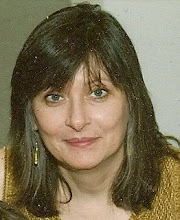Unless you majored in music at the university level, “New Music” is probably not what’s loaded on your ipod under “classical”. I’m not even sure what to call it, and I don’t think even its fans do—new music, twelve-tone, atonal, experimental, fashion-forward, whatever. However, World’s Foremost Authority on Everything (aka, my daughter) spent her pacifier days being entertained (read, shut up) by a video of the Three Tenors, so traditional classical music is so, well, BTDT that we trot off to “New Music” a lot.
WFA was delighted, early on, by hearing John Adams conduct his Grand Pianola Music, Shaker Loops, and other works during his guest artist gig at Northwestern. We progressed on to attending a performance of his opera A Flowering Tree, which oddly enough I loved and she detested. It made her so aggravated she wanted to argue with him in person, but Mr. Adams escaped her clutches, luckily for him. However, my toleration for pure orchestral new music only goes on for so long, but unfortunately most orchestral performances go on for about twice that long.
Therefore, it was with some shaking in my crocs sandals that I agreed to form part of the cheering squad at the final concert of Camposition, a showcase for music composition students in the summer program of the Chicago Academy for the Arts. Dal Niente was playing the music composed by these students, and I was delighted to see a harpist, and even more delighted to see that that harpist was Ben Melsky, from whom WFA took a few lessons before he graduated from Northwestern. Well, I’m certainly not qualified to say that Ben is the best harpist of his generation (although others have), but I can certainly report he hasn’t been slacking off since graduating, as the guy has forearm muscles like steel bands.
It was a most interesting chamber music ensemble overall, with Mabel Kwan on piano, Paul Mulligan playing clarinet and Ryan Muncy on saxophone—a different set of instruments than the omnipresent violin, cello, etc. The piece I most enjoyed was Monica George’s One Day a Rabbit of My Own. It was the longest work, and employed a lot of innovative techniques (striking harp strings, for example) which actually enhanced the music. Monica put a lot of thought into the piece and how to use the available instruments in the composition. I know so, especially since she came over to borrow WFA’s harp composition handbooks several weeks earlier.
Student composer Brendan Mohr gets the prize for the most works generated, with 4 works on the program. I found most of them a bit difficult for me to click on, but his endings were particularly striking and exciting. WFA and I had a fine time arguing about Lauren Williams’ work Illusions and WFA was thrilled to get the sheet music for Jahan Nolley’s piece Wane.
Maybe it was because the entire concert only lasted an hour and I knew relief was in sight if needed. Maybe it was because the room and the audience was small, with black walls, but it seemed like a velvety experience to me: intimate, engaging, and an exciting showcase of personal vision. My only gripe is that, in an educational setting with a production of music most of us still need to learn to appreciate, there was no information whatsoever provided. Come on folks! How about some liner notes for us dunderheads who would like to know about your inspirations, what you were thinking, even why you chose your titles?! And Dal Niente! PR, guys! I don’t want to have to go chasing you down on the internet just to find out who you are! What if I were super rich and wanted to hire you? (Okay, I’m not, but I wish…)
Anyway, I’m not quite a convert, and I do think listening to music with no clear theme and a lot of mathematics is a bit of a stretch. But that Sunday, in that setting, with so much earnest talent, it was a privilege, a delight, and why I am so happy to live near a big city.
Monday, August 31, 2009
Subscribe to:
Post Comments (Atom)


No comments:
Post a Comment